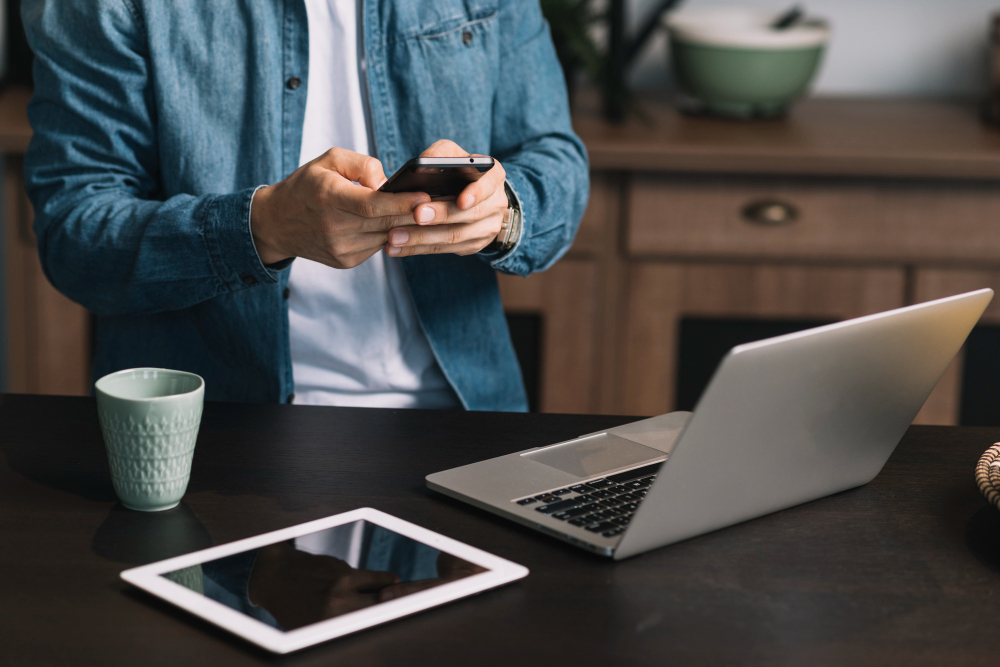
It's time to connect your computer and phone
You already share your on-screen time between your smartphone and computer - why not pair them? There are a number of ways to use your compatibility tool, which increases the effectiveness of both. From data synchronization to application switching, we have five ways to enhance your phone and computer.
1. Sync files via cloud
If you're on the go, you want to have access to the same files on your phone and computer, so sync them. Many applications do the work for you, but they all work more or less the same. Select a service first. Install the mobile version on your phone; on your computer, download the desktop client or access the web interface through your browser. Then log in to your account to access your latest files.
The hardest thing is probably to choose which service to use. On iOS, iCloud is the default option, and on Android, it's Google Drive. When you set up your phone, it will ask you to sign in with an Apple or Google account to configure these services, and if you do, it will be compatible with Windows and macOS machines. So you don't have to stick to standard applications. You can download Google Drive for iOS, or you can either uninstall and switch to a third-party service, such as Microsoft OneDrive or Dropbox. Both work on all major operating systems: iOS, Android, macOS and Windows.
2. Bring your browser
You already have a lot of important things in your browser - remember passwords, bookmarks, searches and browsing history. To ensure that all this stays with you as you move between devices, you create a user account and choose to sync data.
The good news is that all browsers offer this point. You'll only run into an obstacle if you use Safari on your Apple computer and have an Android device. The Safari mobile app is only available for iOS, so if you don't have an iPhone, you'll need to choose a different browser, such as Google Chrome, Mozilla Firefox, or Microsoft Edge.
If you have already selected a browser, download it to your phone and computer. When you start the application, you'll be prompted to sign in with your Google, Firefox, or Microsoft account.
Then go to your browser settings and customize your sync options. For example, in iOS versions, go to app settings and click Sign in to Chrome, Sign in to sync (Firefox), or Sign in with your Microsoft account (Edge). In the Android versions, follow the same steps. Safari - again on iOS only - is a little different: Go to the iPhone Settings app, tap your Apple ID, follow iCloud, and then set the Safari switch to On. Once you set up synchronization, it will run automatically in the background.
3. On Windows computer, Share pictures and texts
Windows 10 introduces an application - named, enough to introduce you, your phone - to make your phone and computer compatible, and you will also find it in Windows 11. The application allows you to view photos, text messages, conversations and even notifications are synchronized between two devices.
Start by running the program on your computer: Windows 11 places the icon in front of and in the middle of the new port, but if you can't find it, enter "Your phone" in the search box and select the best options from the list. When it opens, sign in with a Microsoft account that combines computer and mobile data. Then enter your phone number. Allows your phone to receive a text message with a link to download Your Phone Companion. If you are already logged in to your phone, the two devices can now "meet" each other. This means you can view photos of your new phone on a larger screen - just open the computer application and click on the photo icon on the left. You can scroll photos from this interface.
Selecting one opens in the default Windows image editor. For text messages, you can view them by clicking on the message icon on the left. From this interface, you can read and reply to messages, dial and dial, and even reject notifications. Unfortunately, these features only work on Android phones, but the trick with your phone also works on the iPhone. If you have Microsoft Edge installed on your phone and computer, you can click the mobile version feature on the PC button (like the arrow on your phone) to move this webpage to the desktop version of the browser trees.
4. In the Apple ecosystem: Keep the screen running
If you fully trust Apple products - iPhone and Mac - you can use the Keep It Up feature. It offers many different ways to pair your mobile and desktop in tandem if you log in to both devices with the same Apple ID, turn on Bluetooth, and connect them to the same WiFi network. The Continuity Camera feature allows you to import photos directly from your iPhone into multiple desktop applications without any intermediate steps. For example, say you open a Keynote presentation on your computer. To take a photo, click Insert> Insert from iPhone or iPad> Take a picture, then transfer it to your iPhone (which is already in shooting mode). This trick can also be used in Mail, Messages, Notes, Finder and more.
Another useful function of continuity is called Handoff. If you launch a compatible application - iPhone, Maps, Safari, Reminder, Calendar, Contacts, Pages, Numbers or Keynote - on your iPhone and Mac - you can jump between devices and keep the same data on the screen. You can find these forwarding options on the iOS multitasking screen (for access, swipe up and hold) and on the macOS port.